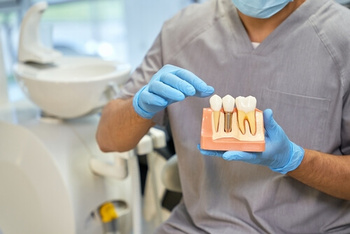Your smile is your most valuable accessory. It’s a universal language that transcends barriers and connects people. Naturally, you want your smile to be a reflection of your inner confidence and joy. But is getting dental implants Philippines the right decision?
Yes, dental implants have become a remarkable solution to achieving that perfect smile, especially when dealing with missing teeth or other dental issues.
When Australians examine dental implant choices, they frequently face a decision between travelling to the Philippines for possibly cheaper treatment or trusting in the quality and safety of dental implants in their own nation.
In this article, we embark on a journey to explore the essential differences between dental implants in the Philippines and Australia. While the Philippines may seem like an attractive option for affordable dental implants, we’ll uncover the truth about seeking dental implants treatment there.
The Drawbacks Of Dental Implants In The Philippines
While the Philippines may seem like an alluring destination for dental tourism due to its potential cost savings, it’s crucial to be aware of the drawbacks and potential risks involved in any surgical procedure, even cosmetic surgeries.
Consider the following important factors:
1. Quality Standards And Training
Dental philosophies and standards in the Philippines can differ significantly from those in countries like Australia. Dentists may have varying levels of training and education, and the regulatory environment may need to be rigorous, which significantly impacts the quality of care and safety standards during dental implant procedures.
2. Infection Control
Maintaining stringent infection control protocols is essential during any dental procedure, especially invasive ones like dental implant surgery. While some dental practices in the Philippines may uphold high standards, there is a huge risk of encountering clinics with subpar infection control practices, which can lead to complications.
3. Limited Oversight
The dental industry in the Philippines is diverse, with various practitioners offering dental services. However, the oversight and regulation of dental clinics and practitioners may not be as comprehensive as in Australia. This lack of oversight can pose challenges regarding accountability and quality assurance.
4. Limited Access to Further Training
While there are undoubtedly skilled dental professionals in the Philippines, access to ongoing training and education in advanced dental procedures, including dental implants, can be limited compared to countries with established and robust dental education systems.

Patients may encounter dental professionals with limited experience with the latest advancements in implant dentistry, potentially affecting the success and quality of their procedures.
5. Language Barrier
Communication is crucial in any medical or dental procedure. Language barriers can hinder communication between patients and dental professionals, potentially leading to misunderstandings or misinterpretations of treatment plans and aftercare instructions.
6. Post-Procedure Care
Proper post-operative care is critical for a successful and complication-free recovery after dental implant surgery. Patients who travel to the Philippines for treatment may find difficulties obtaining prompt follow-up care and assistance after they return to Australia.
7. Unforeseen Complications
Dental implant procedures, while generally safe, can have unforeseen complications. In the Philippines, addressing these complications can be more challenging, especially if they arise after returning home. This can result in added stress and additional costs for remedial treatments.
The National Library of Medicine (NIH) revealed in its study that dental patients may develop sinus barotrauma or barodontalgia following their dental treatment abroad due to pressure fluctuations during the journey home.
It’s crucial to weigh these drawbacks against the potential cost savings and carefully consider whether seeking dental implants in the Philippines aligns with your priorities for quality, safety, and long-term dental health.
Dental Implants In Australia
Receiving treatment in your home country is a wiser decision than going to developing countries where quality dental care isn’t promised.
Here’s why you’re more likely to have a successful experience with your Australian dental clinic than in the Philippines, as highlighted by the Australian Dental Association (ADA):
1. Stringent Dental Standards
Australia is well-known for having high dental standards and a strong regulatory structure in place to assure the quality and safety of dental services. To attain these high standards, dental experts in Australia receive extensive study and training.
What’s In It For You: You can have confidence in the consistent adherence to safety protocols, infection control measures, and high-quality materials in Australian dental clinics.
2. Highly Skilled Implant Dentists

In Australia, dental implant procedures are performed by highly skilled and experienced dentists. These professionals have undergone extensive training and hold deep, applied knowledge of the latest techniques and technologies in implant dentistry.
What’s In It For You: You can benefit from the expertise of dentists who can assess your unique needs and provide tailored treatment plans for successful outcomes.
3. Access To Comprehensive Dental Care
Dental implant operations are available in Australia, as are a wide range of other dental services. Patients can receive complete treatment from initial assessment and implant installation through follow-up sessions and maintenance.
What’s In It For You: You can have the convenience of receiving all aspects of your dental implant treatment in one location, minimising the need for multiple consultations and travel.
4. Clear And Transparent Costs
While dental implant procedures in Australia may have a higher upfront cost than overseas options, the pricing is typically clear and transparent. Patients can receive detailed cost breakdowns and understand the full scope of their treatment expenses.
What’s In It For You: You can make informed decisions about your dental care, knowing the exact costs involved and avoiding unexpected expenses.
5. Advanced Technology And Equipment
Dental clinics in Australia are furnished with cutting-edge technology and equipment, which increases the precision and efficacy of dental implant placement.
What’s In It For You: With this cutting-edge technology, you can be certain that your success rates and patient outcomes will be higher than those in the Philippines.
6. Communication And Language
Effective communication between patients and dental professionals is vital. You won’t face language barriers in Australia.
What’s In It For You: You can take a breath of fresh air now that you know you’ll have clear and concise discussions about your treatment plan, expectations, and post-operative care instructions. There’s no room for error or misunderstandings.
7. Local Health Insurance Coverage
Many Australians have private health insurance that covers dental treatments, including dental implant procedures.
What’s In It For You: You can substantially reduce your out-of-pocket expenses associated with dental implants, making your dental treatment more affordable.
8. Minimal Travel-Related Stress
Opting for dental implants in Australia eliminates the need for international travel, which can be stressful and time-consuming.
What’s In It For You: You can undergo the procedure in a familiar environment, reducing anxiety and potential travel-related complications.
9. Confidence In Treatment
Choosing dental implants in Australia provides peace of mind, knowing that you’re receiving treatment in a country renowned for its healthcare standards, professionalism, and patient-centric care.
While dental tourism may offer cost savings, it’s crucial to take into consideration the long-term benefits and potential risks. Ultimately, the decision to opt for dental implants in Australia ensures higher quality, safety, and overall satisfaction.
The Dental Implants Procedure In Australia
Obtaining dental implants in Australia is characterised by a meticulous and patient-centred approach.
An outline of what to anticipate during the dental implant process is provided below:
1. Initial Consultation And Assessment
The journey begins with the very first consultation with a qualified dentist. Your local dentist will completely check your oral health, analyse your candidature for dental implants, and explain treatment choices during this appointment. This is an excellent moment to discuss any issues or questions you may have.
2. Treatment Planning And Imaging
The next step involves detailed treatment planning if dental implants are deemed suitable for your case. Advanced imaging techniques, such as 3D cone-beam computed tomography (CBCT) scans, are often utilised to create a precise treatment plan. These images allow the dental team to assess bone density, locate vital structures, and plan implant placement accurately before you undergo surgery.
3. Bone Grafting (If Necessary)
In cases where the jawbone lacks sufficient density or volume to support implants, bone grafting may be recommended. This procedure involves adding bone graft material to the deficient area to enhance bone strength and density. It typically requires a healing period before implant placement.
4. Implant Placement

The implant placement procedure occurs once your oral health is optimised and any necessary bone grafting has healed. This is typically performed under local anaesthesia or conscious sedation. During the surgery, the dental implant, often made of biocompatible titanium, is precisely positioned in the jawbone. A cover screw, or healing abutment, may be placed to facilitate the healing process.
5. Healing And Osseointegration
Following implant placement, a crucial phase begins—osseointegration. This natural process involves the jawbone bonding with the implant’s surface, effectively anchoring it in place. Depending on individual healing capabilities and overall health, this phase can take several weeks to months.
6. Abutment Placement
Once osseointegration is confirmed through assessments and imaging, the next step involves attaching the abutment to your implant, which serves as the connector between the implant and the final restoration.
7. Final Restoration
After the abutment is placed, impressions are taken to create your custom-made crown, bridge, or denture. This final restoration is meticulously designed to blend seamlessly with your natural teeth, ensuring both functionality and aesthetics.
8. Follow-Up And Maintenance
Consistent follow-up appointments are essential to monitor the healing process and assess the implant’s stability. Your dentist will also guide your oral hygiene practices and care to ensure the longevity of your dental implants.
9. Long-Term Enjoyment
Dental implants can withstand the test of time with proper care and maintenance, providing a stable and natural-looking solution for missing teeth. Many patients report enhanced confidence, improved oral function, and a renewed quality of life.
Frequently Asked Questions
Are dental implants in Manila a cost-effective dental treatment option?
Dental implants cost in the Philippines may seem enticing initially, but patients should consider the potential risks, additional expenses, and the varying quality of care associated with seeking dental implants abroad.
Are dental implants in Australia worth the investment?
Dental implants in Australia offer a higher level of safety, quality, and expertise. While the initial cost may be a little higher, the long-term benefits and successful outcomes make them a worthwhile investment.
How can I ensure the success of my dental implant procedure in Australia?
Choosing a reputable and experienced implant dentist in Australia is key to ensuring the success of your dental implant procedure. Conduct thorough research and ask for patient testimonials and before-and-after photos.
Are there payment options or dental insurance plans for dental implants in Australia?
Many dental practices in Australia offer payment plans or accept dental insurance. Patients should inquire about these options to make dental implants more accessible.
What is the success rate of dental implant procedures in Australia?
Dental implant procedures in Australia have a high success rate, often exceeding 95%. The expertise of implant dentists and adherence to strict dental standards contribute to this success.
Next Steps: Prioritising Safety And Quality
While the allure of affordable dental implant cost in the Philippines may be tempting, Australians should prioritise their safety, long-term health, and the quality of their dental implant procedures.
Dental implants in Australia offer superior care, expertise, and transparency, ensuring successful outcomes and peace of mind for patients.
When restoring your smile and oral health, choosing Australia is the safer and smarter choice.
Don’t hesitate to call our expert team at Glenferrie Dental, Dentist Hawthorn, VIC, at (03) 9818 1930 to join our lovely family of satisfied patients and get your new smile with our natural-looking dental implants!
Note: Any surgical or invasive procedure carries risks. Before proceeding, you should seek a second opinion from an appropriately qualified health practitioner.
Sources
“ADA Policies – Elective Overseas Dental Treatment.” Australian Dental Association, ada.org.au/policy-statement-2-2-6-elective-overseas-dental-treatment.
Colgate. “Dental Tourism: 5 Risks of Traveling for a Dental Procedure.” Colgate, Mar. 2022, www.colgate.com/en-us/oral-health/dental-visits/dental-tourism-5-risks-of-traveling-for-a-dental-procedure.
Dental Implant Procedure | Bupa Dental Care UK. www.bupa.co.uk/dental/dental-care/treatments/dental-implants/what-to-expect/procedure.
Felkai, Péter, et al. “Dental Tourism and the Risk of Barotrauma and Barodontalgia.” British Dental Journal, vol. 234, no. 2, Springer Nature, Jan. 2023, pp. 115–17. https://doi.org/10.1038/s41415-023-5449-x.
Healthdirect Australia. “Cost of Dental Care.” Healthdirect, www.healthdirect.gov.au/cost-of-dental-care.Raikar, Sonal, et al.
Factors Affecting the Survival Rate of Dental Implants: A Retrospective Study.” Journal of International Society of Preventive and Community Dentistry, vol. 7, no. 6, Medknow, Jan. 2017, p. 351. https://doi.org/10.4103/jispcd.jispcd_380_17
